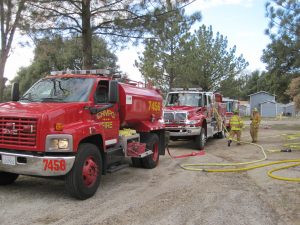The Evolution of Firefighting Equipment and Technology


Firefighting, an essential public safety service, has undergone remarkable transformations since its inception. This evolution is not just a tale of bravery but also a story of innovation and technological advancement. From the rudimentary tools of the past to the sophisticated technology of today, firefighting equipment has evolved to meet the challenges of modern-day fires, becoming more efficient, safer, and more effective in protecting lives and property.
The Early Days: Simple Tools and Techniques
The history of firefighting equipment begins with simple yet fundamental tools. In ancient times, buckets of water were the primary means of extinguishing fires, passed hand-to-hand in human chains. The Roman Empire introduced the first fire brigade, equipped with axes, buckets, and rudimentary pumps, laying the groundwork for future firefighting methods. However, these early tools were limited in their effectiveness, often overwhelmed by the scale and intensity of fires.
The Introduction of Fire Pumps
The development of the manual fire pump in the 17th century marked a significant advancement in firefighting technology. These pumps allowed firefighters to project water onto flames from a distance, enhancing their ability to combat fires. Despite being a leap forward, these manual pumps required considerable human resources to operate and had limited range and pressure.
The Industrial Revolution: A Catalyst for Innovation
The Industrial Revolution brought about dramatic changes in firefighting equipment. The introduction of steam-powered fire engines in the 19th century revolutionized firefighting, offering more significant water pressure and volume, reducing reliance on manual labor, and significantly improving fire suppression capabilities. This period also saw the development of the first fire hydrants, providing a reliable water source for firefighting efforts.
The Advent of Motorization
The transition from horse-drawn to motorized fire engines in the early 20th century marked another pivotal moment in the evolution of firefighting technology. Motorized engines offered increased speed, reliability, and the capacity to carry more equipment and water, greatly enhancing the efficiency and effectiveness of firefighting operations.
Modern Advances: High-Tech Equipment and Techniques
In recent decades, technological advancements have transformed firefighting equipment and strategies, introducing a new era of high-tech firefighting.
Personal Protective Equipment (PPE)
The development of advanced personal protective equipment (PPE) has significantly increased firefighter safety. Modern firefighting gear, made from flame-resistant materials, protects firefighters from heat, flames, and toxic smoke, while breathing apparatuses allow them to operate in smoke-filled environments. Thermal imaging cameras have become invaluable tools, enabling firefighters to see through smoke and locate hotspots and trapped individuals.
Fire Suppression Technology
Innovations in fire suppression technology have led to more effective and less water-intensive methods. Chemical fire retardants and foam systems can suppress fires more quickly and with less environmental impact than water alone. Automated fire suppression systems, such as sprinklers, provide an immediate response to fires, often controlling or extinguishing them before firefighters arrive on the scene.
The Role of Drones and Robotics
Drones and robotics represent the cutting edge of firefighting technology. Drones equipped with cameras and thermal imaging can survey fire scenes from above, providing critical information on fire behavior and the location of hazards. Robotics, such as remotely operated vehicles, can enter dangerous areas, delivering water or foam to fires without risking firefighter lives.
The Future: Smart Technology and Beyond
The future of firefighting equipment and technology looks to integrate innovative technology, artificial intelligence (AI), and augmented reality (AR) to further enhance firefighting capabilities. Smart helmets with AR can provide real-time data and navigation assistance within burning buildings, while AI can predict fire spread and optimize response strategies. These advancements promise to make firefighting even safer and more effective, reducing the risk to firefighters and the communities they protect.
A Journey of Continuous Innovation
The evolution of firefighting equipment and technology is a testament to human ingenuity and the relentless pursuit of safety. From simple buckets to sophisticated drones and AI, each innovation has built upon the last, pushing the boundaries of what is possible in firefighting. As technology continues to advance, the future of firefighting will undoubtedly see even more significant improvements, ensuring that firefighters are better equipped, safer, and more effective than ever before in their noble mission to save lives and property.
